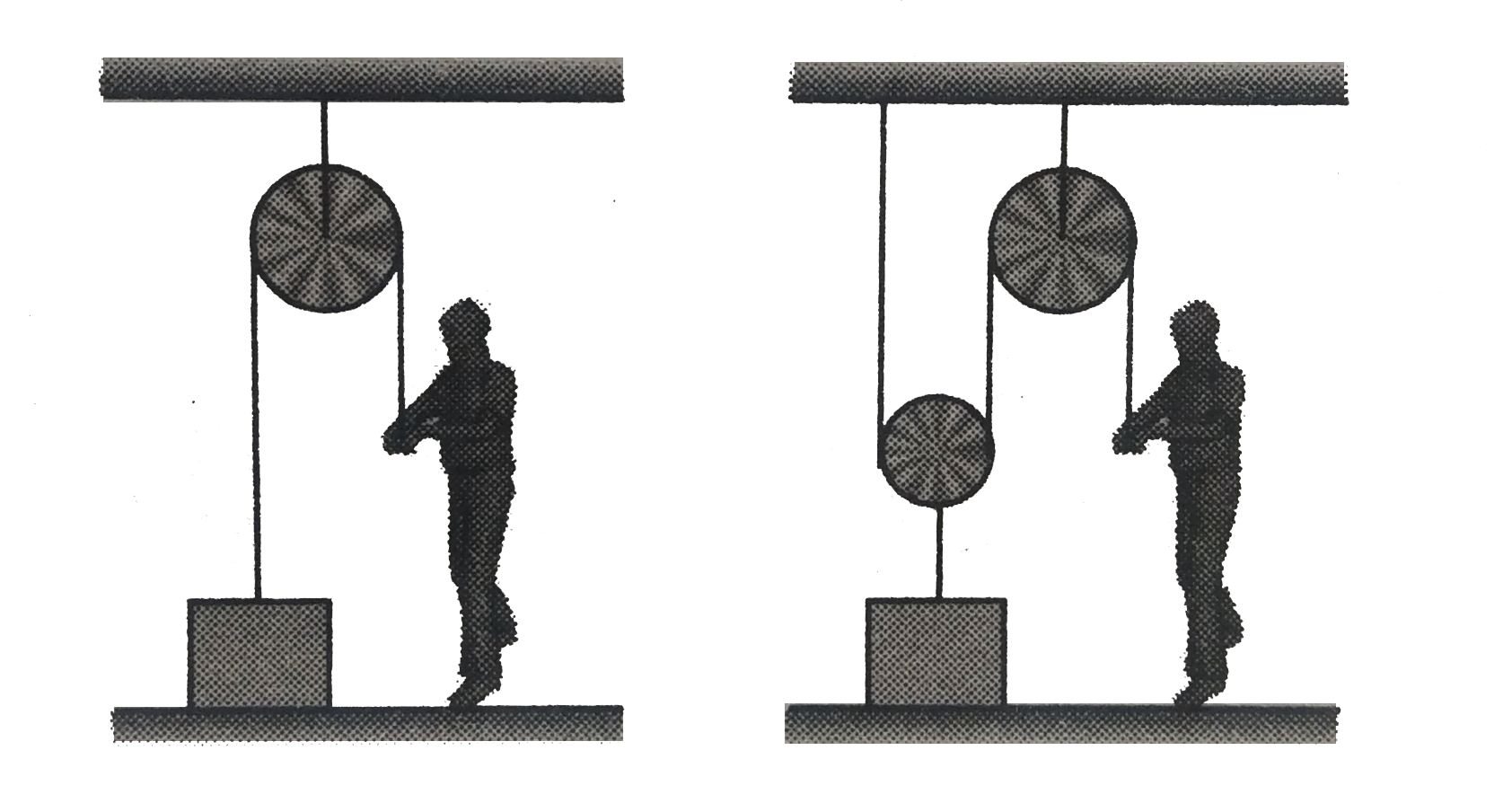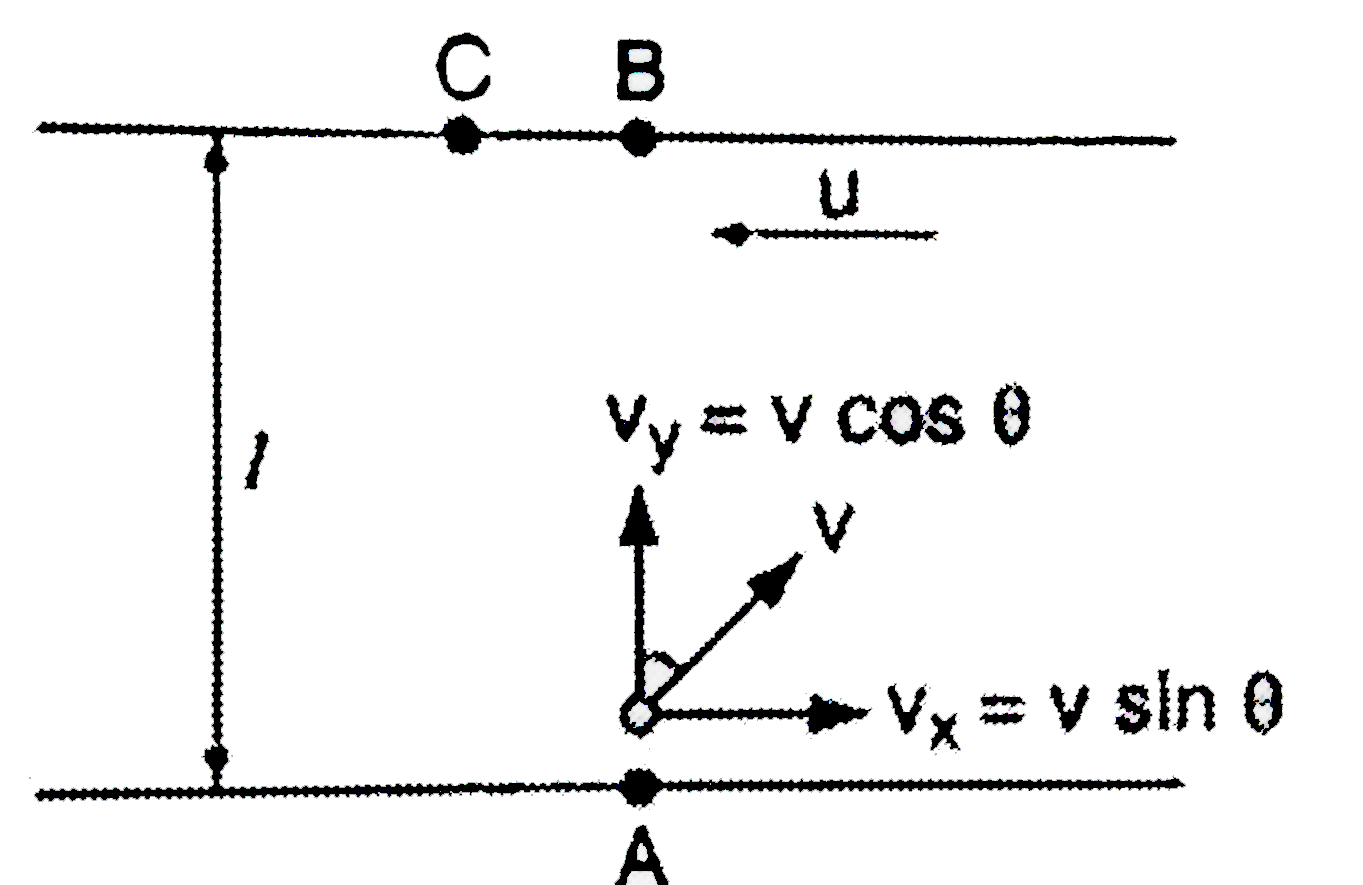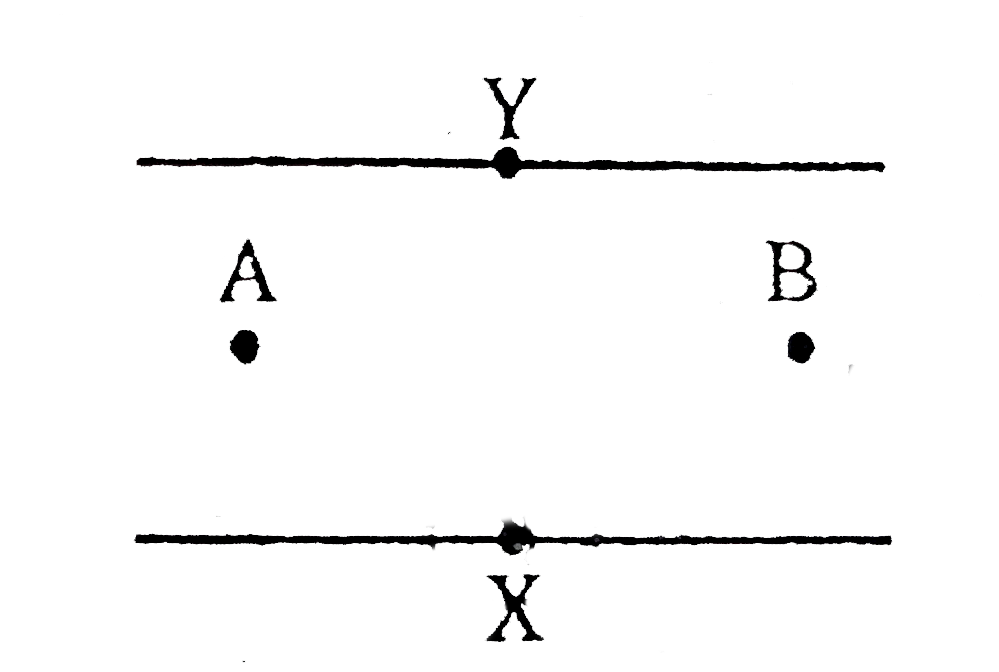In fig., a person wants to rise a block lying on the ground to a height h. In both the cases, if the time required is same, then in which case he has to exert more force? Assuem pulleys and strigns light.

(i)
(ii)
Same in both
Cannot be determined
The correct Answer is:A
Since , h=12at2, a should be same in both cases, because h and t are same in both cases as given.
In Fig., F1−mg=ma⇒F1=mg+ma
In fig., 2F1−mg=ma⇒F2=mg+ma2
.F1>F2

Topper's Solved these Questions
- NEWTON'S LAWS OF MOTION 1BOOK - CENGAGE PHYSICSCHAPTER - NEWTON'S LAWS OF MOTION 1EXERCISE - Multiple Correct
11 Videos
- NEWTON'S LAWS OF MOTION 1BOOK - CENGAGE PHYSICSCHAPTER - NEWTON'S LAWS OF MOTION 1EXERCISE - Assertion-reasoning
15 Videos
- NEWTON'S LAWS OF MOTION 1BOOK - CENGAGE PHYSICSCHAPTER - NEWTON'S LAWS OF MOTION 1EXERCISE - Subjective
15 Videos
- MISCELLANEOUS VOLUME 2BOOK - CENGAGE PHYSICSCHAPTER - MISCELLANEOUS VOLUME 2EXERCISE - INTEGER_TYPE
10 Videos
- NEWTON'S LAWS OF MOTION 2BOOK - CENGAGE PHYSICSCHAPTER - NEWTON'S LAWS OF MOTION 2EXERCISE - Integer type
1 Videos
Similar Questions
The pulley of radius R can rotate freely about its axle as shown in the figure. A thread is tightly wrapped around the pulley and its free end carries a block of mass m. When the block is at a height h above the ground the system is released (i.e., the pulley is made free to rotate & the block is allowed to fall) and at the same instant the axle is moved up keeping it horizontal all the time. When the block hits the floor the axle has gone up by a distance 2h. Find the angle by which the pulley must have rotated by this time.

View SolutionTwo swimmers start at the same time from point A one bank of a river to reach point B on the other bank, lying directly oppostie to point A. one of them crosses the river along the straight line AB, while the other swims at right angles to the stream and then walks the distance, which he has been carried awayby the stream to get to point B. Both swimmers reach point B at the same time. what was the velocity (assumed uniform) of his walking if velocity of both the swimmers in still water is 2.5 km h−1 and the stream velocity is 2 km h−1?

View Solution
Knowledge Check
In the figure shown, a person wants to raise a block lying on the ground to a height h. in both the cases if time required is same then in which case he has to exert more force. Assume pulleys and strings light.
 A(i)B(ii)Csame in bothDcannot be determined
A(i)B(ii)Csame in bothDcannot be determinedIn the figure show , a person wants raise a block lying on the ground to a height h . In which case he has to exert more force. Assume pulleys and strings are light .
 AFig (i)BFig (ii)CSame in bothDCannot be determined
AFig (i)BFig (ii)CSame in bothDCannot be determinedConsider a spherical body A of radius R which is placed concentrically in a hollow enclosure H of radius 4R as shown in the The temperature of the body A and H are TA and TH respectively Emissivity transmittivity and reflactivity of two bodies A and H are (ea,eH),?(tA,tH), and (rA,rH) respectively (Assume no absorption of the thermal energy by the space in between the body and enclosure as well as outside the enclousre and all radiations to be emitted and absorbed normal to the surface [Tskeσ×4πr2×3004=βJ/s]

Consider two cases, first one in which A is a perfect black body and the second in which A is a non-black In both the cases temperature of boby A is same equal to 300K and H is at temperature 600K For Ht=anda≠1 For this situation mark out the correct statements (s) .AThe bodies lose their distinctiveness inside the enclosure and both of them emit the same radiation as that of the black body .BThe rate of heat loss by A in both cases is the same and is equal βJ/s .CThe rate of heat loss by A in both cases are different .DFrom this information we can calculate exact rate of heat loss by A in different cases .
Answer the following:
a) The casing of a rocket in flight burns up due to friction. At whose expense is the heat required for burning obtained? The rocket or the atmosphere?
b) Comets move around the sun in highly elliptical orbits. The gravitational force on the comet due to the sun is not normal to the comet's velocity in general. Yet the work done by the gravitatonal force over every complete orbit of the comet is zero. Why?
c) An artificial satellite orbiting the earth in very atmosphere loses its energy grdually due to dissipation against atmospheric resistance, howerver small. Why then does its speed increase progressively as it comes closer and closer tothe earth? d)In fig i) the man walks 2m carrying a mass of 15 kg on his hands. In Fig ii) he walks the same distance pulling the rope behind him. The rope goes over pulley, and a mass of 15 kg hangs at its other end. In which case is the work done greater?

View SolutionA small block is projected into each of the four tracks as shown below. Each of the tracks rises to the same height. The speed with which the block enters the track is the same in all cases. At the highest point of the track, the normal reaction is maximum in
View SolutionA small block is shot into each of the four tracks as shown below. Each of the tracks rises to the same height. The speed with which the block enters the track is the same in all cases. At the highest point of the track, the normal reaction is maximum in
View SolutionA small block is shot into each of the four tracks as shown below. Each of the tracks rises to the same height. The speed with which the block enters the tracks is the same in all cases. At the highest point of the track, the normal reaction is maximum in :
View SolutionA and B are two fixed spots in a river in which water has a steady sped vw. A person who can swim with a speed v relative to water swims from A to B and back to A alomg shortest path. If the

water is still, the person will take a time 30 minute in swimming from A to B and back to A along the shortes path. But we know that water is acually not still. The person also knows the technique of just flowing with water without exerting his own effort. Using this technique, i.e., just being carried with water, he takes a time 20 minute in moving from A to B. As shown, X and Y are two places directly oppsite to each other on oppsite banks. Assuming that width of the river is the same as the distance A and B, answer these questions. (assume v>vw)
Choose the correct option(s) :
View Solution
